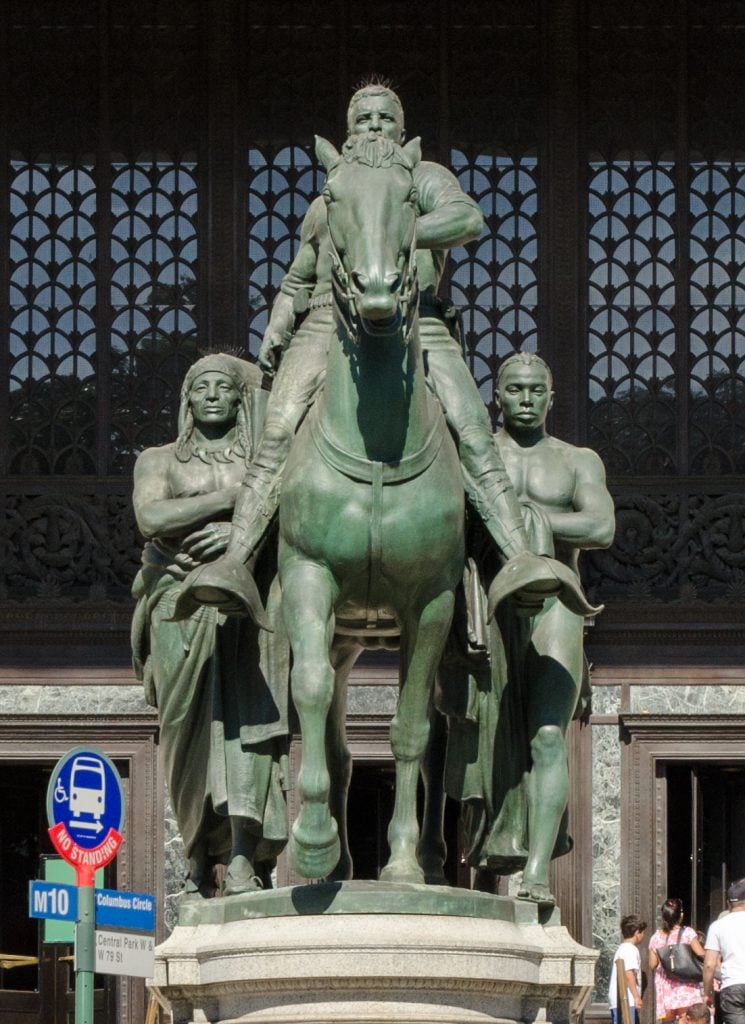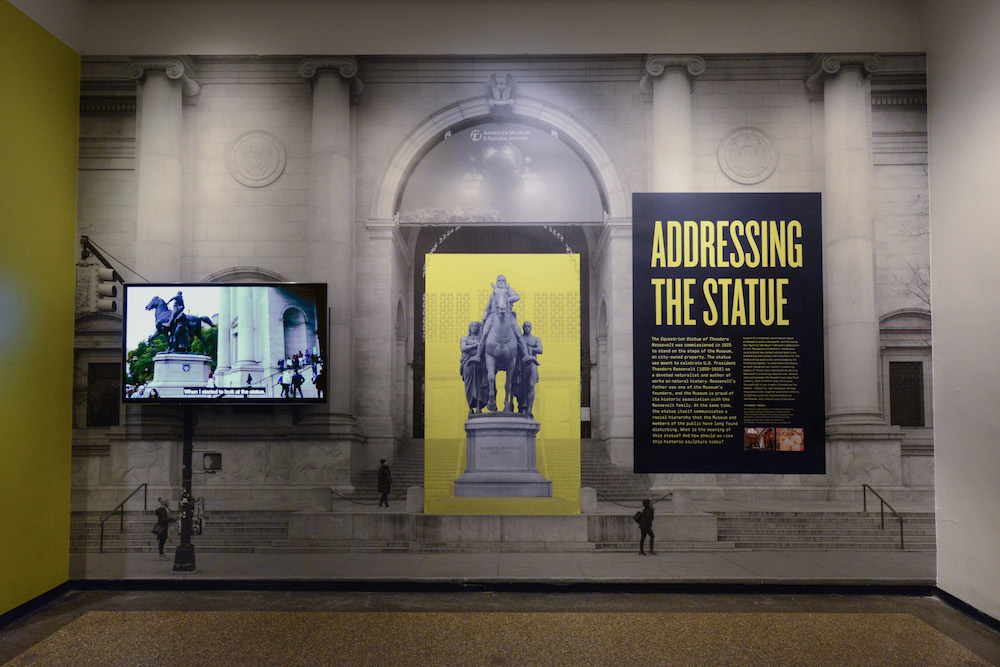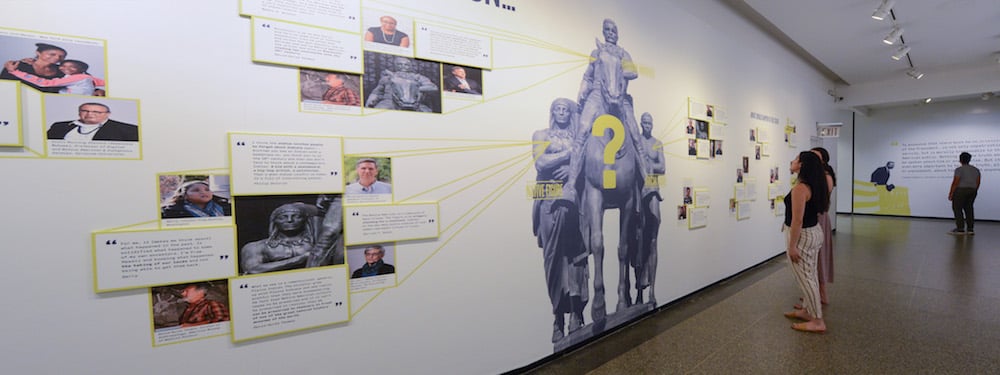Politics
New York City Authorities Vote Unanimously to Remove Theodore Roosevelt’s Statue From the Museum of Natural History’s Steps
After years of debate and controversy, a final decision has been reached.

After years of debate and controversy, a final decision has been reached.

Eileen Kinsella

One of the most recognizable—and controversial—statues in New York City is conclusively coming down.
The New York City Public Design Commission voted unanimously on Monday, July 21, to relocate the towering statue of Theodore Roosevelt that has stood outside the American Museum of Natural History since 1940. The vote is the final step in a years-long process that has been fueled by nationwide protests targeting Confederate monuments and other symbols of America’s racist history.

Installation view of “Addressing the Statue” at the American Museum of Natural History. ©AMNH/C. Chesek.
The bronze statue depicts the former New York state governor and U.S. president on horseback with a Native American man in full headdress on one side and a bare-chested Black man on the other. The work, by artist James Earle Fraser, was commissioned in 1925 as part of a larger initiative to honor Roosevelt, who was a naturalist and author of natural history works.
While the statue “was not erected with malice of intent,” New York City Parks Department chief of staff Sam Biederman said during Monday’s meeting, the subject matter and content “supports a thematic framework of colonization and racism.” (The vote and full discussion are viewable on YouTube.)
The push for the statue’s removal began to pick up steam in 2017. After the deadly white supremacist rallies in Charlottesville, Virginia, mayor Bill de Blasio convened the Mayoral Advisory Commission on City Art, Monuments, and Markers to address the future of the city’s divisive statues.
The commission was particularly divided on the fate of the Roosevelt statue. Half of its members believed additional historical research was necessary before offering recommendations; the other half advocated to relocate the sculpture, possibly inside the museum or to another publicly accessible location.
Mayor Bill de Blasio ultimately cast the tie-breaking vote to keep the statue in place in 2018. But in a sign of just how much public opinion surrounding monuments has changed, the museum itself proposed its removal two years later, in June 2020, at the height of uprisings for racial justice. The mayor, as well as Theodore Roosevelt IV, a great-grandson of the former president and a museum trustee, backed the museum’s proposal.
On Monday, the city took the final step when its public design commission voted unanimously to move the statue to a cultural institution dedicated to the life and legacy of the former president, according to the New York Times, though no specific site has been chosen yet.

Installation view of “Addressing the Statue” at the American Museum of Natural History. ©AMNH/C. Chesek.
“Height is power in public art, and Roosevelt’s stature on his noble steed visibly expresses dominance and superiority over the Native American and African figures,” the 2018 report stated. “Whatever the intent at the time of its commissioning, the sculpture reads as a depiction of hierarchy to many viewers in New York City today.”
In January 2019, the museum hosted an exhibition titled “Addressing The Statue,” that delved into the meaning of the statue and how it should be viewed in current times.
“The museum is pleased that the Public Design Commission voted unanimously to approve relocation of the Equestrian Statue,” the Museum of Natural History said in a statement. “We thank the multiple city agencies that have been involved in developing and reviewing this proposal.”